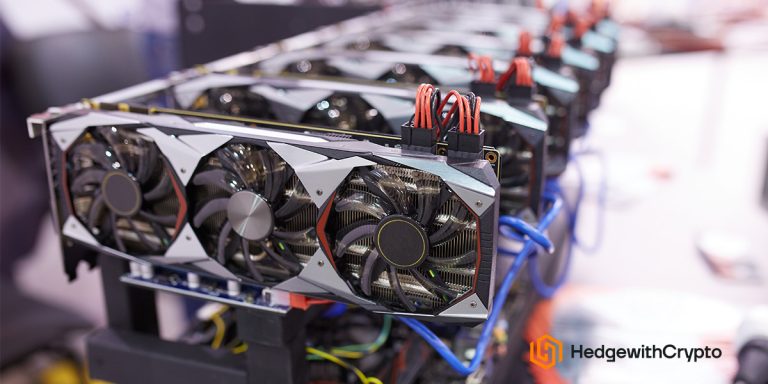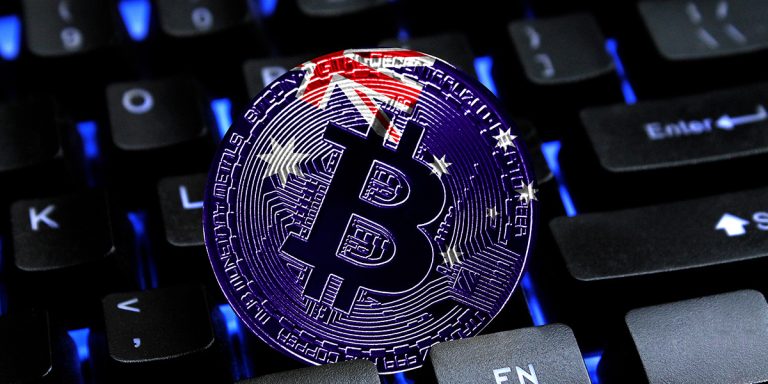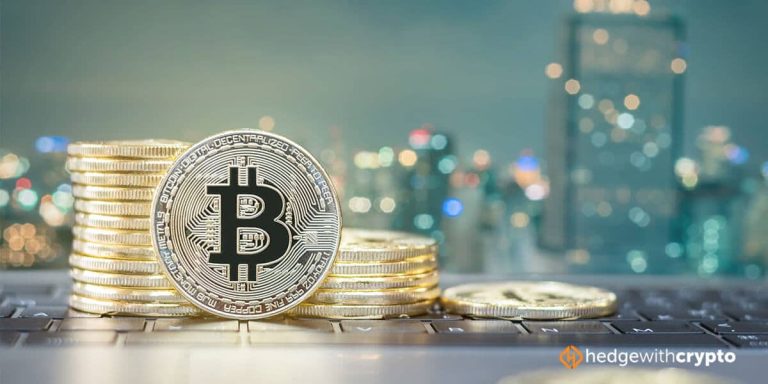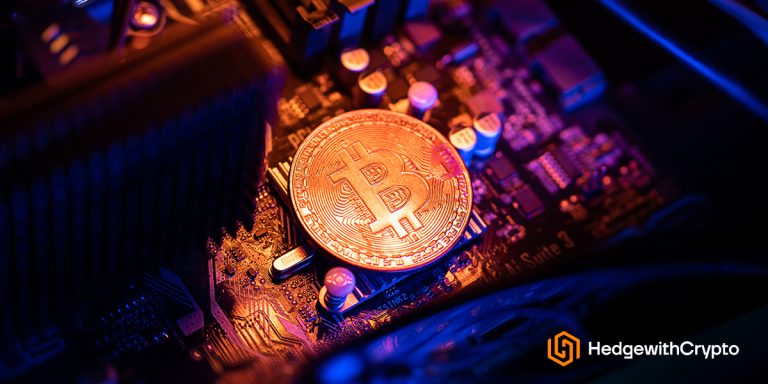How To Mine Bitcoin in Australia
TABLE OF CONTENTS
This guide will look at how to mine Bitcoin, what equipment is required, how much it costs, which crypto exchanges have mining pools, and most importantly answer the question: is it worth mining Bitcoin in Australia?
Here's a quick explainer on how you can start mining Bitcoin in Australia:
- Calculate profitability: Determine the potential profitability by calculating the costs for the hardware needed, block reward rate, and electricity prices.
- Purchase a mining rig: Buy a GPU or dedicated mining rig using ASICs to compete with other Bitcoin miners.
- Download and Install Mining Software: Choose Bitcoin mining software. There are plenty of free options available for Australian miners. Some software is designed for complete novices, whereas other applications are intended for experienced miners who want comprehensive customization.
- Join A Mining Pool: Join a pool to compete against mining farms and businesses. This involves many miners pooling their resources and sharing any Bitcoin rewards. A popular option for Australians is Binance Pool.
- Connect Mining Software to Pool: Mining pools will have individual instructions for linking mining software. Connect the rig to the using the mining software to the pool.
- Start Mining Bitcoin: Power on the hardware, connect to the Bitcoin blockchain through the mining software and start mining.
What Is Bitcoin Mining?
All cryptocurrencies are supported by a technology known as the blockchain. The blockchain is a database that stores information about the currency across many computer servers. Transactions with digital currencies are recorded on the blockchain using a “confirmation process”. Each time somebody wants to send or receive Bitcoin, the transfer must be verified by an independent party.
This is what Bitcoin miners are for. When a new “block” (transaction) on the chain appears, a consensus (confirmation) protocol ensues. The consensus process ensures that each transferral of crypto is legitimate and poses no threat to the blockchain’s function. The job of a Bitcoin miner is to confirm and finalize each transaction. Once the consensus process is successful, an irreversible block containing a transaction record is added to the database. Each time miners are responsible for confirming a new block on the blockchain, they are rewarded with a small portion of Bitcoin. Mining is vital to the Bitcoin ecosystem. Without miners, Bitcoin would cease to exist.
How Does Bitcoin Mining Work?
Bitcoin mining involves validating transactions made with BTC on the blockchain using a consensus mechanism known as “Proof-of-Work” (PoW). Miners must prove to other miners that a minimum amount of computational power has been used before confirming a transaction. In practical terms, PoW requires miners to use extremely powerful computers and solve complicated mathematical algorithms. By solving these calculations, the miner can prove to the blockchain they have performed the necessary amount of “work”. To fully understand this process, it’s important to learn what a transaction confirmation is.
Bitcoin transactions
Every time a new Bitcoin block is created on the blockchain via mining, the block verifies all transactions. The process of transaction verification is called transaction confirmation and uses a form of cryptography known as a hash function. The number of confirmations needed for a Bitcoin transaction depends on the volume of the transaction. For large-volume Bitcoin trades, up to 6 transaction confirmations may be needed, which could take up to one hour to complete.
Hash Function
Hash codes are a cryptographic algorithm that receives a set of data (in this instance, Bitcoin transactions) and outputs a random string of characters. For a BTC transaction to be verified by a miner, they must solve the corresponding hash code. Given the hash’s complexity, brute force is the only way to solve each code. A mining computer will output thousands upon thousands of potential answers until it stumbles across the correct hash code. As Bitcoin mining becomes more competitive, the more difficult the hash code becomes to solve. Bitcoin’s PoW mechanism uses the SHA-256 hash function algorithm, a form of cryptography created by the United States’ NSA more than twenty years ago.
Types of Bitcoin Mining
Bitcoin miners in Australia have a couple of options to choose from. Mining at home was the most popular choice. However, the mining market has become so large that individuals are mostly priced out of mining Bitcoin with standard computers. Therefore, cloud mining or using a Bitcoin mining pool can be viable alternatives.
- GPU/ASIC mining. Bitcoin mining can be performed using a computer’s Graphics Card Unit (GPU). This processing unit is commonly associated with gaming but also contains an Arithmetic Logic Unit (ALU), which helps solve mathematical algorithms. The specifications of an individual GPU will drastically alter the efficiency of mining at home with a desktop. A decade ago, most standard GPUs were capable of slowly mining Bitcoin. In 2022, it will take a top-of-the-line product to come close to recouping an investment. An Application–Specific Integrated Circuit (ASIC) is the most effective at-home solution for mining Bitcoin. These are computer parts specifically designed for mining BTC and other digital currencies. Their ability to perform hash functions is vastly improved over a generic GPU, saving miners time and energy costs. However, a standalone ASIC rig can easily cost over $10,000. To find out the costs and hardware involved in making your own an ASIC rig, read this article.
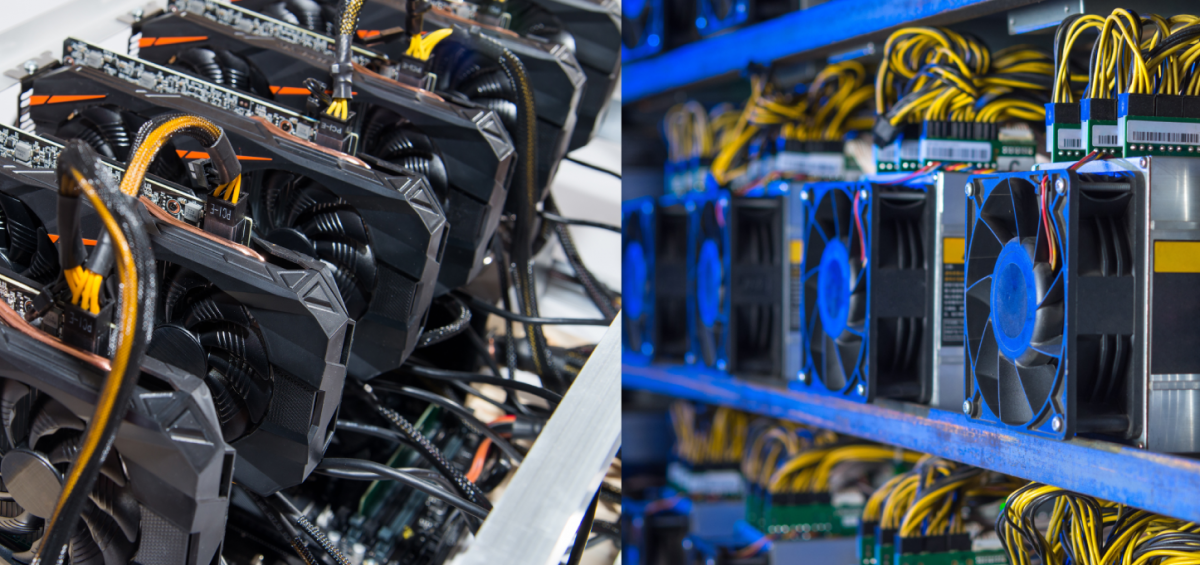
- Cloud mining. Businesses with farms dedicated to mining Bitcoin have taken over the BTC mining industry. As potential profits have faded out of reach for everyday consumers, some of these businesses have begun to offer cloud mining as an alternative. Cloud mining involves leasing an ASIC unit’s computational power to those without the means to operate their own rig. The computers used for cloud mining are nearly always handled by a business on a massive mining farm. Cloud mining allows anyone to participate in Bitcoin mining without the substantial technical knowledge that is typically needed. Whenever a leased-out computer correctly solves a hash function, the renter will earn a portion of the BTC rewards. Participating in cloud mining is incredibly straightforward. All cloud miners have to do is source a reputable provider, sign up for an account and pay for the amount of hash power they want. However, it’s vital to remember that cloud mining isn’t always profitable and it can take years for renters to break even on their contracts.
- Mining pools. Mining pools are another way for individual miners to maximize their potential profits. Because Bitcoin mining is inherently competitive, most at-home miners are up against farms full of high-powered machines. To level the playing field, some miners have organized pools that people can join to increase their chances of earning BTC. Several exchanges that can be used in Australia such as Binance offer online mining pools for Bitcoin and other proof-of-work coins. The process is quite simple and just requires the user to have basic mining hardware, create an account with Binance and obtain the miner IP address. Mining pools work exactly like lottery syndicates. Contributing a larger number of entries for a prize increases the likelihood of receiving that reward. Pools can consist of amateur GPU miners or smaller businesses who agree to split the profits of successfully mining rewards. Generally speaking, those in the pool will split earnings based on the amount of hash power they contribute. For a list of top-rated Bitcoin mining pools according to our reviews, read this article.
How Much BTC Is Earned Per Block Reward?
Assuming an individual device can solve an entire block, the miner is entitled to the full block reward (plus transaction fees). Bitcoin is deflationary, and its block reward halves approximately every four years. In 2009, the reward was 50 BTC, whereas in 2022 it is only 6.25 BTC per block solved. However, given the competitiveness of Bitcoin mining, an individual miner can't earn a full block reward.
Is Bitcoin Mining Profitable In Australia?
Yes, mining Bitcoin and other cryptocurrencies can be profitable for Australians in 2022. However, several factors can impact earning potential. Buying superior mining hardware will cost more in the short term. However, it will vastly improve the chances of turning a profit over the long run. A Bitcoin miner with top-of-the-line products can make approximately $15-20 per day mining Bitcoin in Australia. However, this exact figure can vary dramatically, depending on mining pool fees, the current price of BTC and mining competitiveness. Those with an average GPU-based mining rig are more likely to earn $1-2 (or less) in a day.
How to Mine Bitcoin in Australia 2022: Full Guide
Mining Bitcoin might seem like an easy way to earn some money on the side. However, rushing headfirst into mining without adequate research will almost always lead to a loss. Before setting off on a mining journey, preparation is required. The first step to mining Bitcoin in Australia is assessing its requirements and profitability under local conditions.
Step 1. Determine The Viability & Costs Of Mining Bitcoin
Hardware & Equipment
Personal (or GPU) Bitcoin mining requires a high-powered computer to be profitable. Weaker processing units are unlikely to return many block rewards due to the competitive nature of BTC mining. Top of the line, ASIC products provide the highest likelihood of making a profit, but also need a substantial upfront investment. Bitcoin miners don’t necessarily have to purchase an entire computer to get started. They can build their own from scratch or supplement their PCs with superior parts. Those already owning extremely powerful GPUs may not have to buy hardware.
That said, it is recommended for those seriously considering mining to purchase the best parts they can afford. They will save upgrading in the long run, return more block rewards and raise fewer electricity costs (relative to BTC mined). Second-hand parts can be a viable option and save investors thousands. However, finding reputable dealers will take a bit more research.
Some people even build massive mining systems by hooking up multiple graphics cards. This can be a good middle-ground as newer miners can accumulate more GPUs over time. Ultimately, each new miner will have to decide how much money they are willing to part with. Premium mining rigs or ASIC units can run up into the tens of thousands. Even buying individual processing units – like a top-tier GPU – will cost at least $700. Perhaps the most powerful GPU on the market for BTC mining, the NVIDIA GeForce RTX 3090, retails for over $2,000.
Electricity Consumption
The upfront cost of buying mining hardware in Australia may seem like the biggest expense, particularly with the cost of electricity rising in Australia. However, BTC mining profitability has no greater impact than the electricity costs for running the computer(s). Mining machines need to be kept online and working for as long as possible to have any chance of earning block rewards. That’s not to mention they draw substantially more power than using a regular work computer.
An optimized, high-end GPU unit running 24/7 might use between 3 and 7 kWh daily. A less powerful unit might only rack up 1.6 kWh daily, but will also return fewer BTC rewards. A top-tier ASIC unit can consume over 30 kWh per day. Calculating the potential electricity costs and ensuring it is affordable before investing in anything is vital.
Mining Software
For the system to start mining, Australian miners must download and install Bitcoin mining software. As of 2022, there are many options on the market, most of which can be acquired for free. The biggest consideration when choosing mining software is to determine a level of expertise. Some software is extremely intuitive and only requires a few clicks to optimize mining hardware and get to work. Other programs are intended for advanced users and need custom inputs to work. Some examples of the best Bitcoin mining software include:
- CGMiner (good for experienced miners)
- MultiMiner (requires minimal technical knowledge)
- NiceHash Miner (good for overall experience)
- EasyMiner (best user interface)
Calculate The Cost
The easiest way to determine the costs of mining Bitcoin is to use an online calculator, like the one provided on NiceHash Miner’s website. The overall costs and profitability will depend on each miner’s setup. Let’s say a new miner already has a solid computer and wants to buy a top-line GPU instead of an ASIC unit. They go with the RTX 3060 TI, which costs around $800. It’s worth noting that each GPU and computer will vary in power usage, but let’s assume this GPU adds an extra 3 kilowatts per day to the electricity bill. The average Australian electricity price is around 25c per kWh, which adds up to $273.75 over a year.
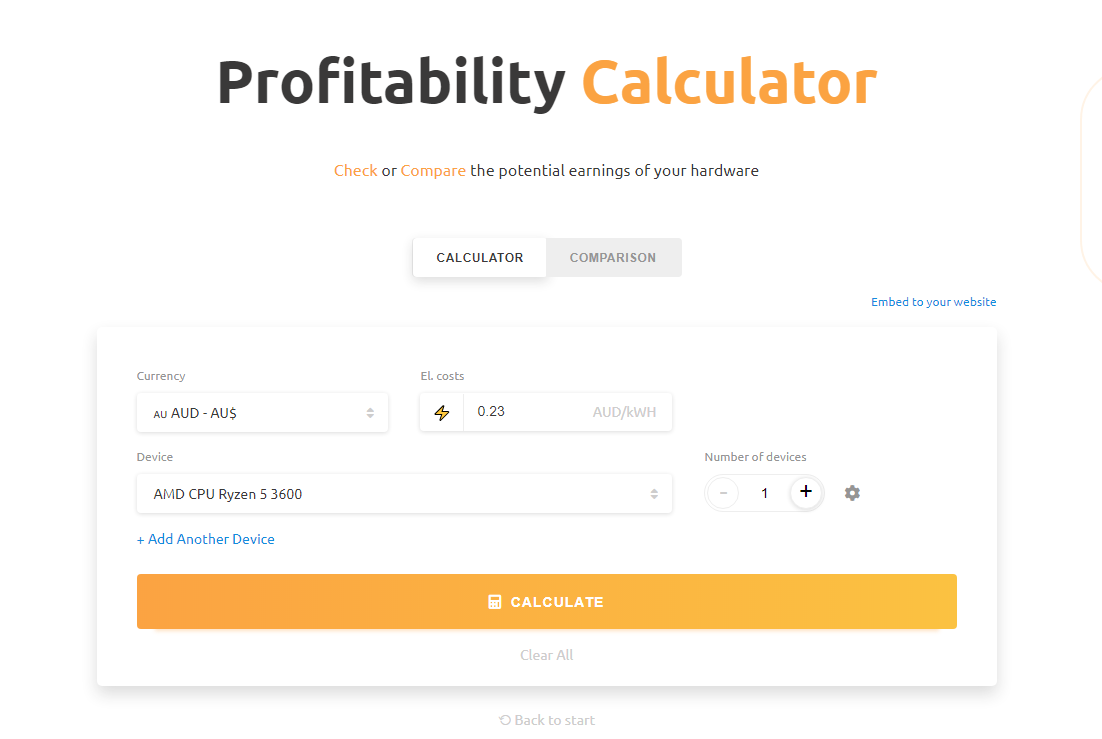
According to NiceHash’s calculator, this mining setup would earn approximately $1.90 AUD in BTC per day, or $693.5 per year. Considering electricity costs, this would result in a yearly profit of $419.75. It’s not a bad return, but it would still take 24 months before a miner would break even on their initial investment. The previous calculation assumes the financial world stays stagnant, which is never the case. Plenty of other factors can affect profitability:
- Rising costs of electricity
- Fluctuations in the price of Bitcoin
- Mining hardware becoming outdated
- Individual mining software rates
- Mining pool fees
- Block rewards halving
- Increased mining competition
Step 2. Choose and Install Mining Software
There are lots of potential options for free Bitcoin mining software to use. A good idea is to find a list of mining software supported in Australia and compare their various features. The main things to consider are:
- What platforms does the mining software support? Some software is designed exclusively for Windows, Linux, or Apple computers.
- How much does the software cost? Most mining software is free, but certain products will require an upfront payment to use their services.
- How accessible is the mining software? The expertise required to use mining software ranges from complete novice to seasoned veteran. Make sure to look for images of the software’s user interface to determine if its design and functions suit your experience level.
Finally, some mining pools will recommend using specific software alongside their services. For simplicity’s sake, beginners should use the suggested software instead of trying to connect a third-party application. Once the mining software has been selected, it must be downloaded and installed. Each program will have a different installation method, but most are straightforward. For example, let’s say a miner wants to use the EasyMiner application to get started. They can navigate to the website's Downloads section and click “Download mirror” on the most recent version of the software.
Lastly, when the file has finished downloading, open it. Follow the setup prompts and confirm where the program should be installed. Click Install and allow the setup wizard to complete the process. Once done, the EasyMiner application can be opened and configured.
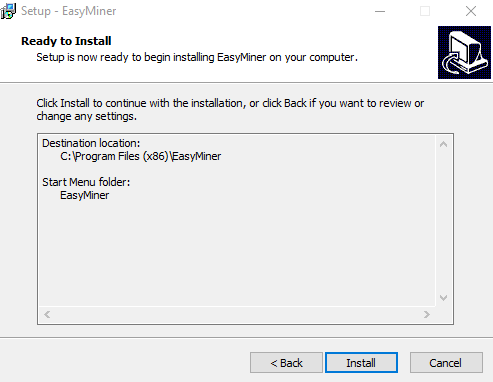
Step 3. Configure the Mining Software
Certain mining software programs will work straight out of the box and require minimal tinkering. Others will need to be optimized to properly and efficiently use specific hardware, like a GPU or ASIC unit. Some modern mining programs can automatically be optimized by entering the hardware used. More experienced miners may want to change all the settings themselves.
Alternatively, new miners might find optimizing their software a bridge too far. Luckily, some programs can automatically detect and tune mining firmware to improve efficiency. Braiins OS+ is one of the market's most popular auto-optimizing mining programs for ASIC miners. It can be downloaded and installed from their official website.
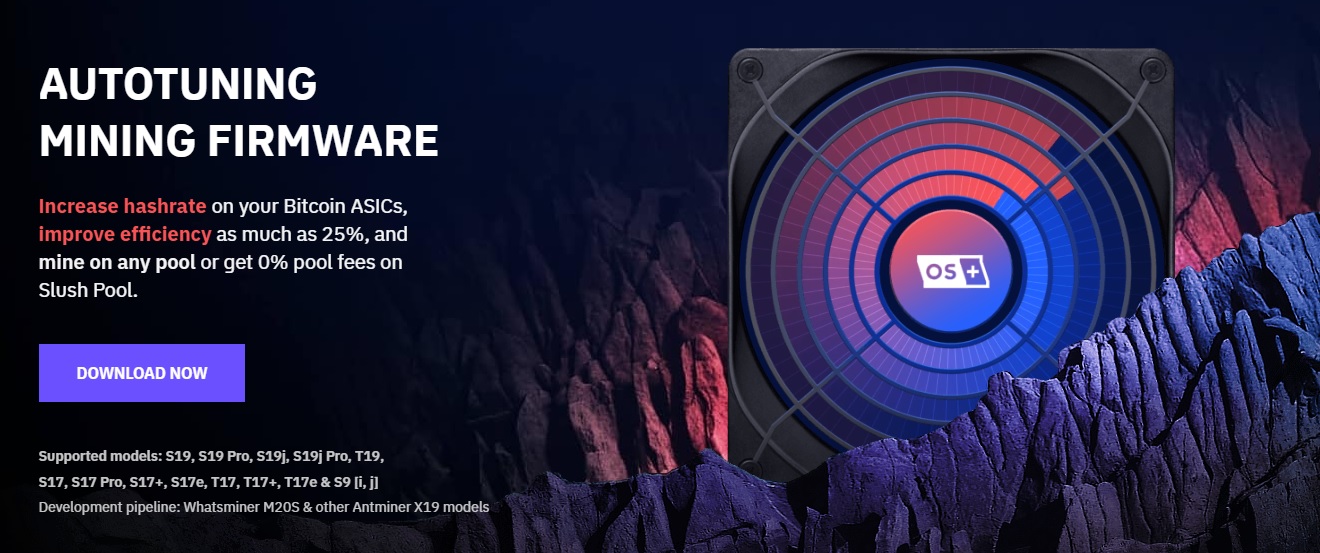
Miners using a GPU can also find guides for their specific models on optimizing performance. Typically, this process involves overclocking a graphics card to enhance the hash rate, while putting a threshold on power consumption to avoid sky-high electricity bills.
Step 4. Choose and Join A Mining Pool
Individual miners compete against warehouses filled to the brim with the latest BTC mining technology. As a sole miner, the chances of earning a block reward are slim. The workaround for this is joining a mining pool. There are a few things to consider when selecting a mining pool. Firstly, each pool will have a different fee rate. These fees are subtracted from the amount of BTC earned. They can vary from 0% all the way up to 4%. When considering how tight the margins of Bitcoin mining are, it’s very important to factor in mining pool fees when calculating profitability. Additionally, mining pools will pay out their miners in varying ways. To understand these methods, we must learn what “share” means.
A share is a way of determining how much work a miner in a pool has contributed. For example, it might take 1,000 shares before miners can validate a Bitcoin block. In a pool of 250 miners, those with top-range ASIC rigs might contribute over 100 shares, while those with weaker GPU systems might only contribute one or two.
- Pay-Per-Share (PPS). PPS payouts are the simplest form of mining pool reward. PPS is a flat rate distributed to miners in the pool for every contributed share. This form of payment is the most stable because miners get paid no matter if their pool receives a block reward or not. However, it is not the most lucrative option as transaction fees are not typically included in the payout.
- Full Pay-Per-Share (FPPS). FPPS payouts are almost identical to the PPS method, with one major difference. Every time the pool solves a block, they receive the block’s reward and the transaction fees. The fees can earn miners close to 0.5 BTC (split among the pool) per block. FPPS provides more earning potential than PPS, but may also have higher pool fees or hardware requirements.
- Pay-Per-Last-N-Shares (PPLNS). PPLNS is another common payout method for BTC mining pools. Unlike the other systems, PPLNS only rewards its pool whenever it finds a block. The pool will reward members based on how many shares they’ve contributed over a certain period. Bitcoin mining pools are easily accessible for Australians. The easiest way to join a pool is usually by signing up for a membership on a website like Antpool. Other options include NiceHash, Slush Pool, EasyMiner, F2pool, Binance Pool, Braiins OS and ethOS (Linux). The process usually involves registering an account on the website and linking the BTC mining software to the pool. Some miners prefer to stick with just one pool, whereas others might “pool-hop” to find the best profits.
Step 5. Link Mining Software To Mining Pool
Now that a mining pool has been selected, the software installed in Step 2 must be linked. Individual mining pools will likely have guides to walk new miners through this process. For example, Slush Pool has a comprehensive walkthrough for Bitcoin Mining using one of their pools. It can become a little technical, and the walkthrough may become too confusing. If this happens, it’s a good idea for new miners to ask for help in a relevant Discord or Telegram server.
Mining pools will come with associated “Stratum addresses”. This is how miners can direct their hash power to a third-party pool. The Stratum addresses can be input into the software, along with a “worker” name (username) and a password. The mining pool's website or community will provide all the required information. When choosing a Stratum address, finding a server close to Australia is a good idea. This will reduce lag and improve mining performance. An example is shown below of the configuration settings for Binance Pool.
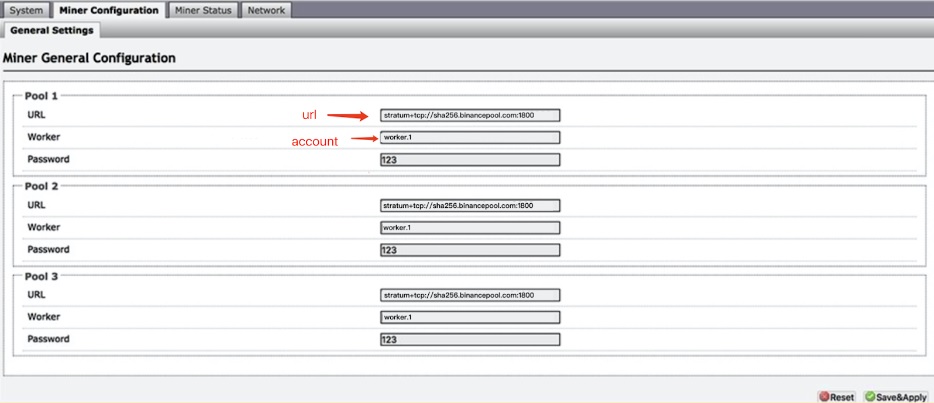
The last configuration step is to connect the address of a crypto wallet to the mining software. This is where the software will direct mining payouts. Miners need to use a wallet on the Bitcoin network, otherwise, they may lose any profits.
Step 6. Start Mining
Finally, select “Start Mining” (or similar) on the mining software and double-check all the information has been entered correctly. If so, the device should begin mining almost immediately. Any BTC earned from mining will automatically be withdrawn to the linked Bitcoin wallet. The Bitcoin can be stored on a reputable crypto wallet or transferred to an Australian exchange.
Frequently Asked Questions
Is mining Bitcoin in Australia worth it?
Bitcoin mining in Australia can be worth it, but it requires a lot of effort and a large, long-term investment before profits can be made. For some, the time and money needed to get started will make mining Bitcoin too difficult.
Is Bitcoin mining taxable in Australia?
Yes, Bitcoin earned from mining is taxable in Australia. Once BTC earnings from mining reach a certain threshold, they will be taxed as income. Hobbyist miners don’t have to pay tax on any BTC earned and stored in a wallet. However, any Bitcoin made from mining that is then sold is subject to the Capital Gains Tax (CGT) according to the ATO.
How many Bitcoins are left to be mined?
As of 2022, there is just under 2 million Bitcoin left to be mined. This represents a circulating supply of around 91% – so only 9% of Bitcoin’s total supply remains mineable. Bitcoin is projected to become unmineable in 2140. At this point, the total supply of BTC (21 million) will be in circulation. However, miners will still form an integral part of the Bitcoin blockchain. Miners will still compete for blocks, but they will be rewarded with transaction fees instead of a predetermined amount of BTC.
